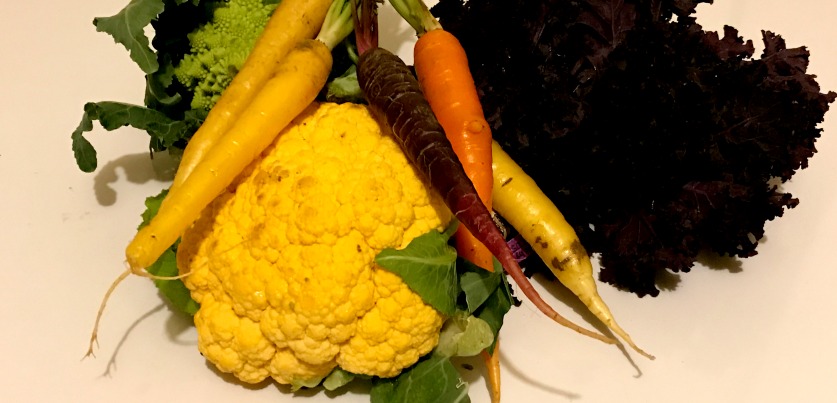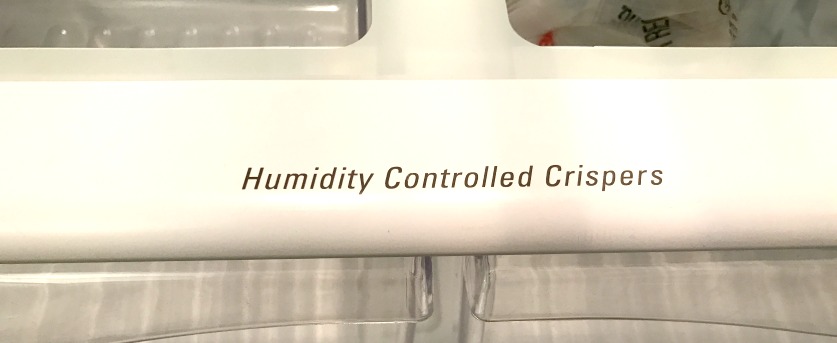How do you stop produce from going bad in your fridge?
I mean really, how much easier would life be if you could solve this riddle?
Because no one is happy when they are reaching for that costly avocado and find it way past it’s prime. And just yesterday it was so firm, you had to pass on using it!!
What gives? Are you just horrible at picking produce?
Likely the answer is no. But you might be horrible at storing it.
I recently took a class at the Sacramento Natural Food Co-op and learned a ton of helpful hints on how to make your buck go further when you are shopping for healthy food.
A big tip, store things correctly and you will slowdown your produce from going bad. The less you throw out, the less you buy, the more you save.
So instead of looking at your fridge as a glorified cabinet for food, start looking at it as a helpful tool to keep your treasured fruits and veggies fresher longer!
And what part of this tool are you likely not using that will stop produce from going bad?
The produce drawers. Specifically the settings for those drawers.
We’ve all seen them. They are the levers above the drawers (technically humidity drawers). Ever wonder what they are for? Decoration?
Nope, better than that! They help keep your produce fresh.
Most humidity drawers are adjustable between low and high. The difference in the number is how open or closed a window in the back of the drawer is (go look now, you know you want to!).
For the low humidity setting, the window is completely open; for the high humidity setting, it is completely closed.
What Should Go in Each Drawer?
First, put things that tend to rot in a drawer set to low-humidity setting. This includes fruits and veggies that emit an ethylene gas, because leaving the window open on the drawer gives those gases a chance to escape.
When the gases are released, it helps keep the fruits and vegetables from rotting prematurely and will stop the produce from going bad as quickly.
Things that wilt go in the high-humidity drawer. So put your leafy greens in this drawer.
Having the window closed, water vapor is held in the drawer and the moisture keeps the greens crisper and fresher longer. Keeping fruits and vegetables that are sensitive to ethylene gas, like strawberries, in this drawer will also keep them away from ethylene producers.
Here’s a handy list of what goes where:
High-Humidity Drawer
The high-humidity drawer should contain:
Produce sensitive to moisture loss.
Produce sensitive to ethylene gas.
Here are some common fruits and vegetables to keep in this drawer:
Bananas (unripe)
Broccoli
Brussels sprouts
Cabbage
Carrots
Cauliflower
Cucumbers
Eggplant
Green beans
Herbs (cilantro, dill, parsley, thyme)
Leafy greens (kale, lettuces, spinach, Swiss chard, watercress)
Peppers
Strawberries
Summer squash
Low-Humidity Drawer
The low-humidity drawer should contain:
Produce not sensitive to moisture loss.
High-ethylene gas producers.
Here are some common fruits and vegetables to keep in this drawer:
Apples
Avocados
Bananas (ripe)
Cantaloupes
Honeydew melons
Kiwis
Mangoes
Papayas
Pears
Stone fruits (apricots, nectarines, peaches, plums)
And one last tip- these drawers work best if they are at least two-thirds full. So stay stocked on all those great fruits and veggies!
So save yourself the money that goes into the trash every time your kale turns bad before you can make that amazing salad you saw on Pinterest.
If you stop produce from going bad so quickly, you’ll be less frustrated and more likely to cook with all those yummy fruits and veggies you picked up at the store and farmers’ market!

